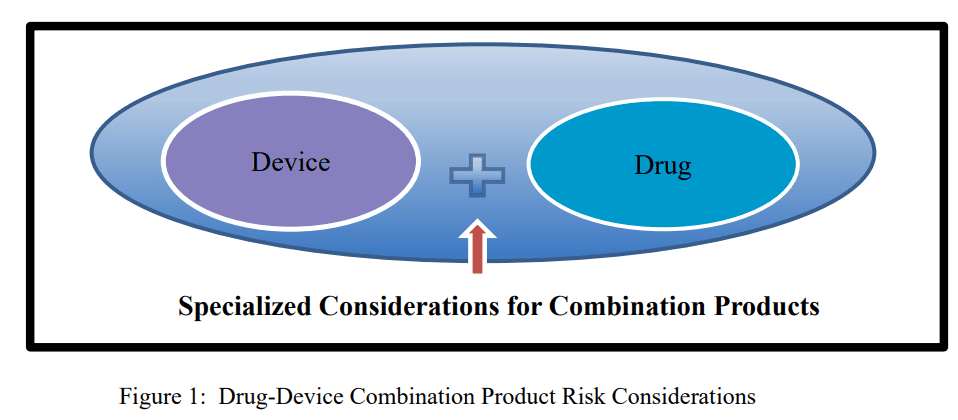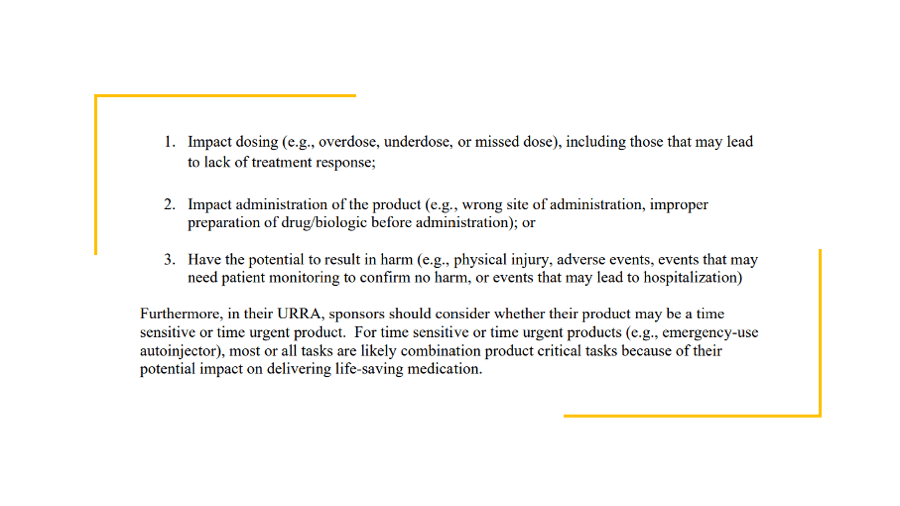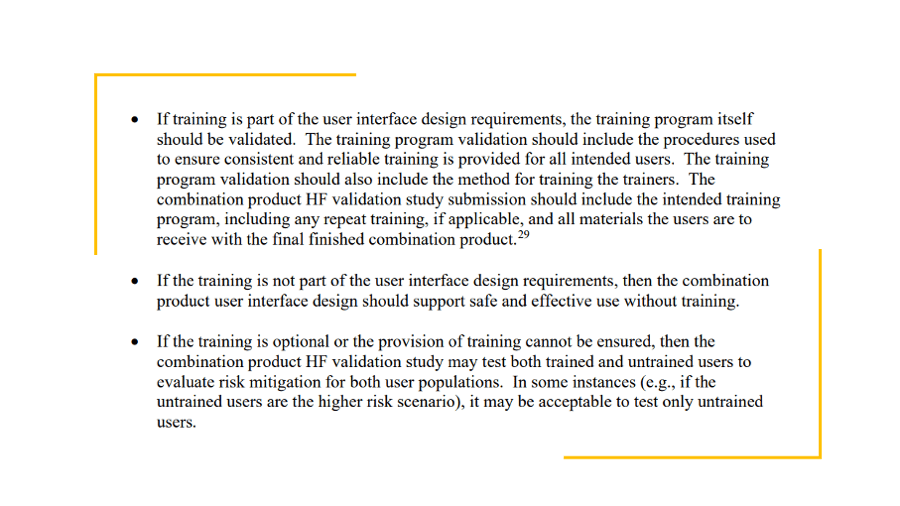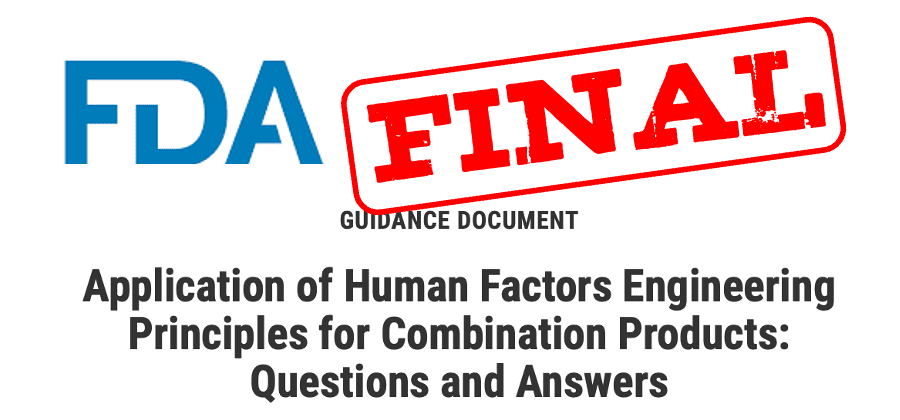Combination Product Industry News & Guidance
Sharing device-related information and wisdom
that will help you succeed
Have you reviewed the FDA’s final guidance on human factors for combination products?
Our team of CP experts have made a cheat sheet of key points and takeaways from the FDA’s final guidance on human factors for combination products published Sept. 8, 2023 to help you extract what you need from the document.
- The FDA’s “Application of Human Factors Engineering Principles for Combination Products: Questions and Answers, Guidance for Industry and FDA Staff” incorporated strong industry opinion by deferring to the existing and well-established CDRH HF guidance document throughout this final guidance.
-
-
- The overall deference to the existing CDRH guidance hopefully will aid a more consistent HF approach between the centers.
-
- Use-Related Risk Analysis (URRA) is more clearly defined and is meant to include the combination product as a whole and not just the individual constituents.

-
-
- This is consistent with how Suttons Creek advises clients routinely – particularly for co-packaged and/or cross-labeled combination products.
-
- Final Finished Combination Product is defined and includes all proposed packaging, labeling, and training.
- Critical task is defined for combination products and is different from the device definition (where compromised medical care is included regardless of resulting risk).
-
-
- This is addressed from a medication error perspective, with further explanation. See excerpt below.
-

-
-
- Critical tasks should be identified in the URRA which is relied upon heavily for FDA’s review.
- This is a clearer definition than in the past, and the guidance now provides a methodology to determine critical tasks and have a discussion with FDA.
- There is acknowledgement that not every task for a combination product is necessarily a critical task, leaving room for a discussion with the FDA.
-
- There is new acknowledgement that the Human Factors validation study (summative) results do not have to be error-proof/risk-free (Q6).
- Clarity provided on training and what may be required to validate. See excerpt below.

- Actual-use validation study is clearly defined and differentiated from other types of clinical studies (actual [clinical] use, home use) that may have other purposes (i.e. non-HF).
-
-
- This has been a continued point of confusion within our industry and, while this provides some level of clarity (also see reference to the bridging draft guidance later in this document).
-
- The need for Human Factors data to support clinical investigations (under IND or IDE) is now more clearly defined and linked to URRA.
-
-
- The URRA is now even more critical and should be done early in the program (prepared in advance of FDA clinical submission or included if it is requested routinely).
-
- There is a little more clarity on evaluating post-validation modifications to the combination product design.
-
-
- URRA is more explicitly linked as the evaluation method and examples of when this may occur.
-
-
-
- There is a reference to the bridging draft guidance here and the fact that such bridging may require evidence beyond Human Factors, which is outside of the scope of this guidance document.
-
- Labeling review during protocol submissions now includes a commitment to minimize potential revisions after Human Factors validation is complete, consistent with MAPP.
-
-
- This has been a sticking point over a period of years with FDA (patient labeling or other teams) requesting various changes during the final stages of review, after HF validation is complete and at which time no further validation could conceivably occur. This further emphasizes their approach which can be helpful to avoid future challenges in this area.
-
- The document includes instruction for addressing Human Factors content in agency meetings.
-
-
- FDA noted situations where it would be beneficial to engage on HF topics and how to go about doing that including supporting information, particularly the URRA.
-
Overall, Suttons Creek would qualify this as a significant step forward for clarifying the application of Human Factors Engineering in Combination Products, and for more – though not complete – consistency with the existing CDRH guidance (and relevant standard: IEC 62366-1). It provides clarity in a number of previously ambiguous or commonly misunderstood areas, though there are still a number of unique circumstances that will require further considerations, outside expert support, and/or FDA engagement. Feel free to contact us to discuss how we can help you maneuver through this guidance.
AUTHOR
Jonathan Amaya-Hodges, Director, Technical Services, Suttons Creek, Inc. – Jonathan has over 16 years of multidisciplinary experience in regulated medical products (drugs, biologics, medical devices, and combination products) at multiple global companies. He has practical experience in Development/Engineering, Quality Assurance, and Regulatory Affairs for various types of combination products with a focus on drug delivery. Additional background includes digital health (including smart packaging/connected devices and software as a medical device, or SaMD) and in vitro diagnostics, along with clinical development (bridging) and lifecycle management for combination products. Jonathan engages with the global combination product community by speaking at conferences, lecturing in courses, serving key roles within prominent industry organizations, and interfacing with regulators on a variety of topics.

